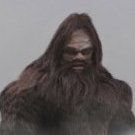Been there, done that, XC. My closest Grizz encounter ended with the bear's nose plowing dirt 20' from my toes, his choice, not mine, as he was coming full tilt, and I wasn't waiting another nanosecond to find out if he was bluffing. Yes, I felt fear, and could taste the brassy taste of adrenaline for hours after, but he's a beautiful rug, and I'm here typing the tale. Fear is a good thing under those circumstances. I've just been invited to back up an old buddy who drew a very rare Grizzly tag for a remote BC inlet, and am seriously thinking about going, as at 69, I may not have too many more years to go on these adventures. No, I don't have big shiny brass ones, just a clear understanding of the risks, and my own abilities, as does my BFing partner, Magniaesir, and a couple of others I have recently come to know. Given the opportunity, none of them will freeze up, and the job will get done.




